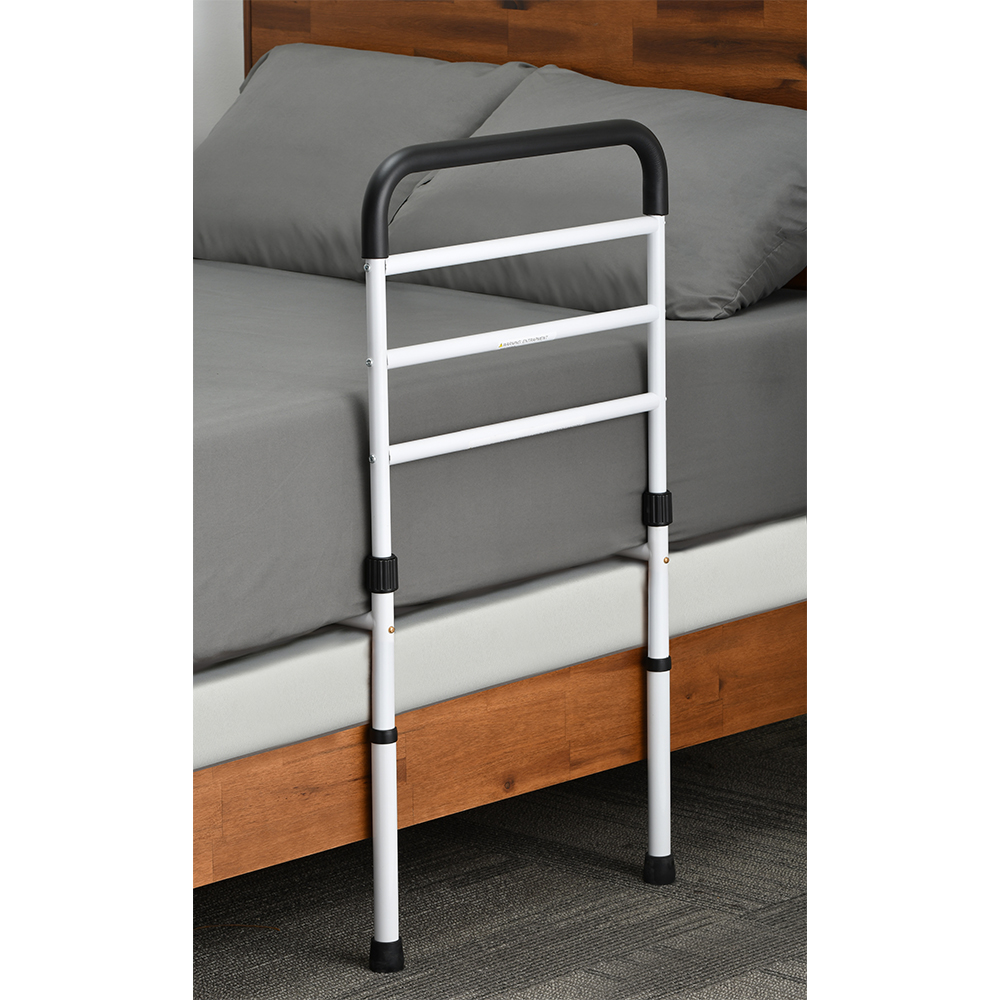As a caregiver, you work tirelessly to help the person in your care live a happy and healthy life (and that’s why you’re reading this blog!).
If you’re caring for an older adult, you might spend countless hours arranging doctor’s visits, organizing prescriptions, and helping them manage chronic health conditions. You might be dealing with the same issues if you’re helping someone recover from an injury that’s limited their mobility and independence.
Given all the work you do to keep them healthy and safe, an unexpected fall can be devastating.
A slip in the bathtub; a trip on a loose carpet; a snag on a broken sidewalk… just like that, the person in your care can suffer an injury that makes their health challenge—and your caregiving—even more difficult.
Fall Risk Areas: Inside & Out
Fall risks are everywhere, both inside the home and outdoors, but the good news is that caregivers have so many resources and precautions available to prevent falls from occurring. With the right home medical equipment and caregiver knowledge, most falls can be prevented.
1. Bathroom Fall Risks

Everyone should be able to practice good hygiene, but bathrooms can be hazardous for people with limited mobility. In fact, many seniors stop or reduce bathing because it’s too uncomfortable or they fear slipping in the bathtub.
You can use the following mobility tools to minimize fall risks in the bathroom:
- Use non-slip mats in the shower
- Install grab bars in the bathtub or shower
- Add a bath chair and/or transfer bench
- Install toilet seat risers or toilet rails
This equipment will make the bathroom a safer and more accessible place for those with mobility challenges.
2. Bedroom Fall Risks
Falls can happen when a person is getting into bed or out of bed.

When the room is dark, the person might not be able to see where they’re going and accidentally trip over something. Minimize this fall risk by installing night lights that turn on automatically when the light is switched off. Remote-controlled lights and a bedside cane may also be helpful.
Older people also risk falling out of bed while they’re sleeping. This type of fall can cause serious injuries, and in some cases the person might not be able to get back up—creating a nightmare scenario where they’re stuck on the floor for hours until help arrives.
Installing bed rails is the easiest way to keep bed falls from happening.
It might also be helpful for the person to have a cell phone or medical-alert device in close reach.
3. Living Room Fall Risks
Caregivers often prepare extensively for bathroom falls but overlook fall risks in the living room and other spaces. Rugs and loose carpets are the main culprits, not to mention transition seams between different types of flooring.
Consider removing rugs and low-lying furniture—such as coffee tables or chairs with wide legs—and make sure that you staple down or remove sections of loose carpet.
Clear out the living spaces as best you can, picking up boxes and belongings off the floor so a person with limited mobility can move more easily throughout the home. Ideally, the pathways through the home are wide enough for a walker.

4. Fall Risks in Low Light
Low light is troublesome for people with limited mobility, especially for those with visual impairment. Inside the home, it’s helpful to install night lights that turn on automatically when it’s dark or that are motion-activated.
It is likely and probable that the person you’re caring for may go outdoors in the evening or at night. Install a flashlight attachment to their cane or walker so they’ll always have a light source to illuminate their path.
5. Sidewalk Fall Risks

Outside the home, breaks in the sidewalk pose the greatest fall risk for seniors, as well as people of all ages who are recovering from a leg injury. There’s no better way to prevent sidewalk falls than using a high-quality mobility device when outdoors. These include:

Although canes and crutches are helpful indoors, they can be less effective in preventing trips over broken concrete or uneven walkways. Walkers and rollators provide much more stability and ease of movement.
You can attach a cane holder to NOVA walkers, giving you the best of both worlds and the versatility to travel your way!
Keep On Moving with NOVA
Falling, and also the fear of falling, can squash the joy that you’re working so hard to cultivate in the person you’re caring for.
If you’re trying to minimize fall risks inside and outside the home, know that NOVA is here to support you. We have a wide assortment of assistive mobility products, from walkers to bathroom safety equipment. With NOVA you can help the person you’re caring for move easily down the path of life.
Discover where you can find a NOVA dealer in your area or continue learning with these tips for senior fall prevention.



